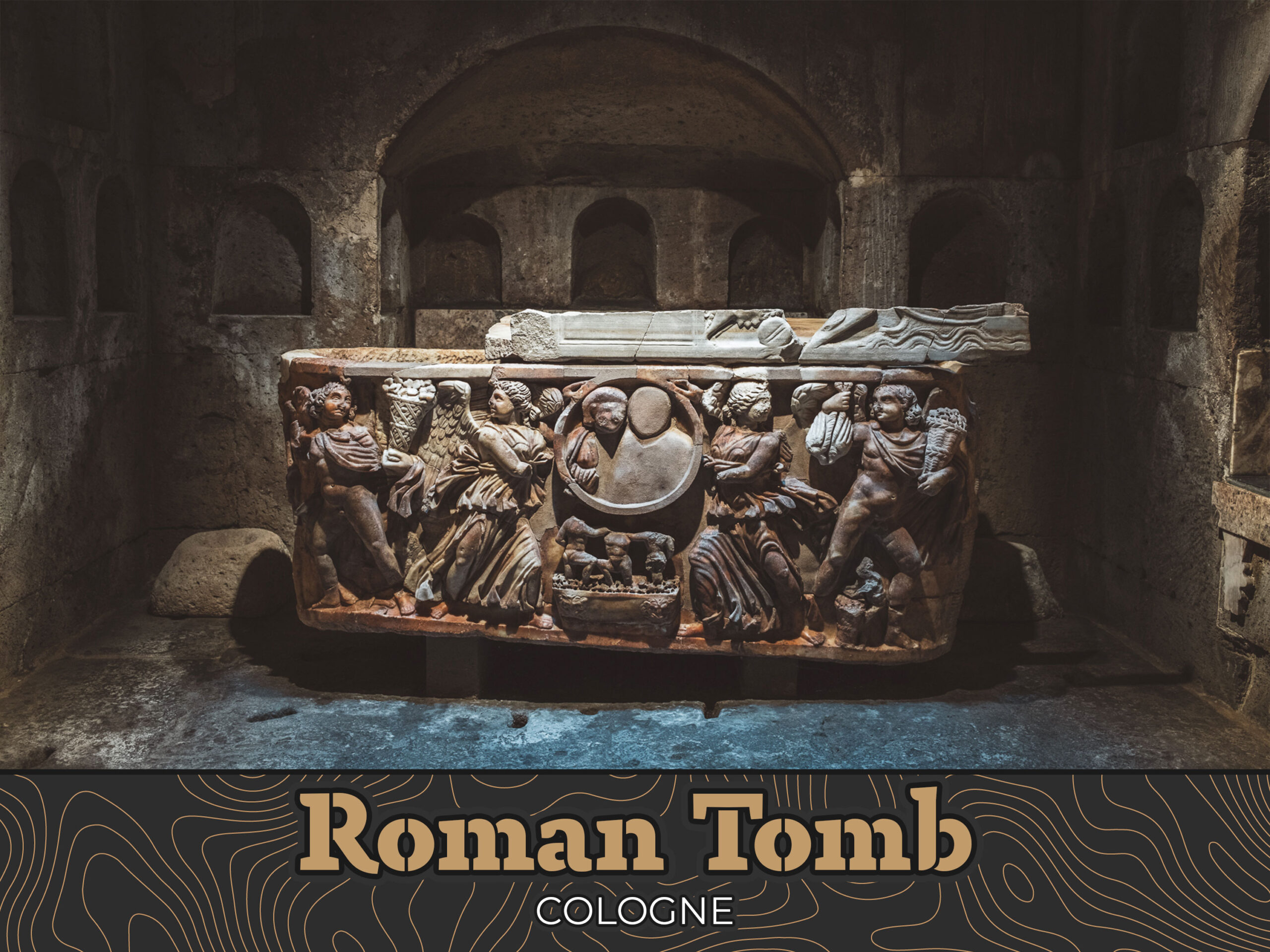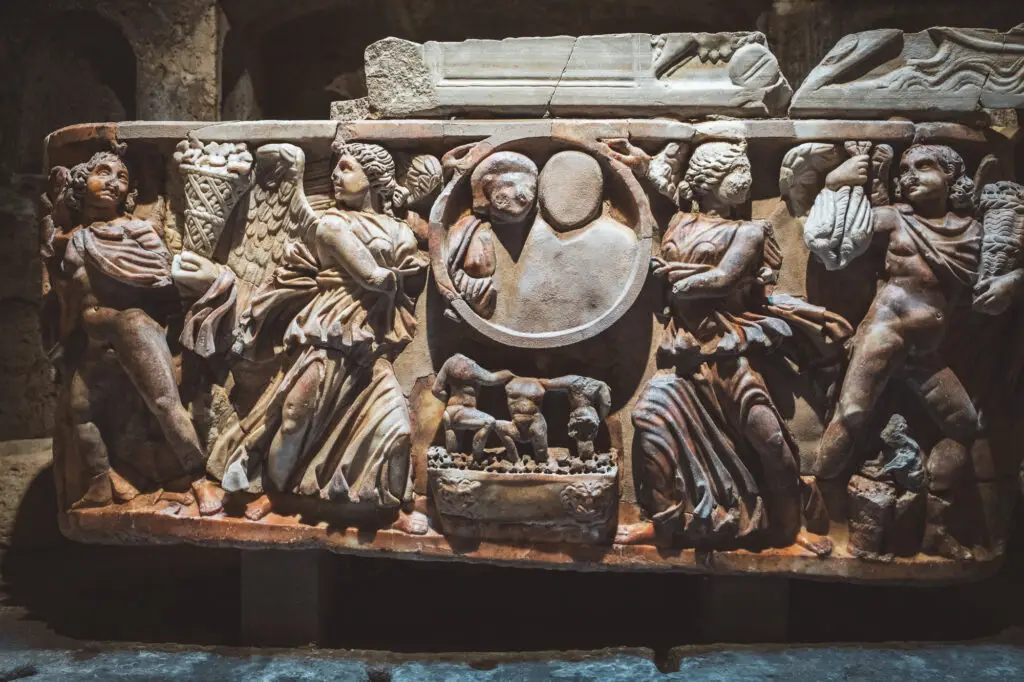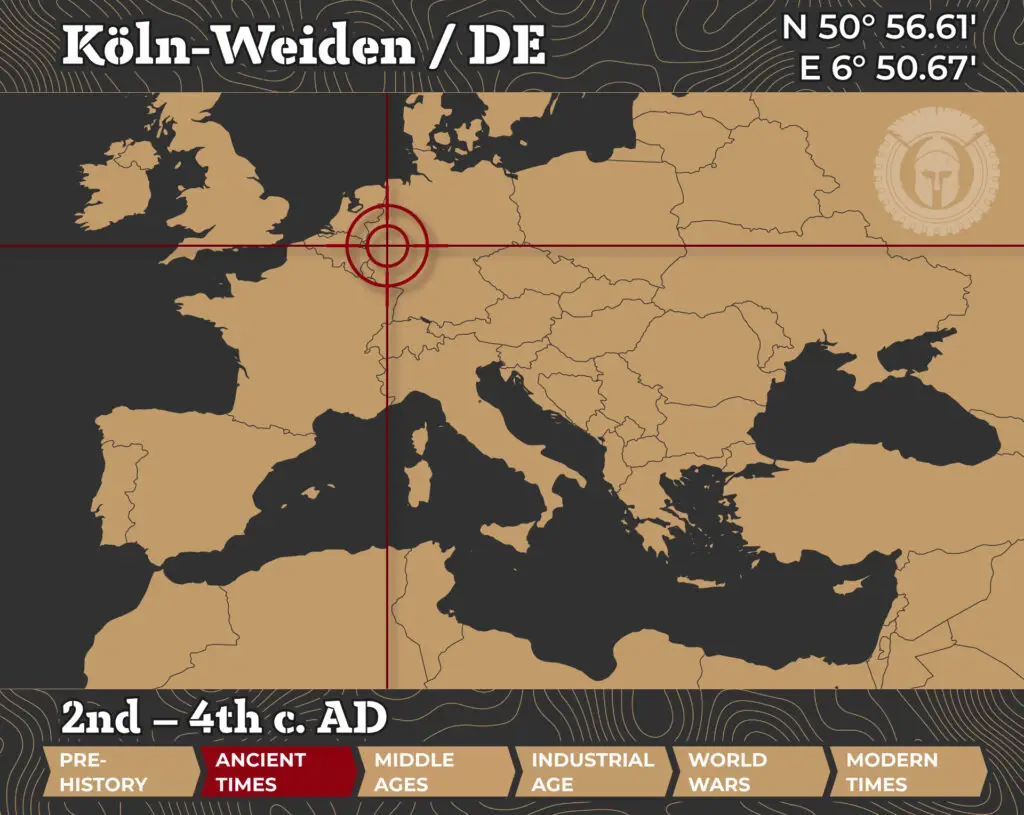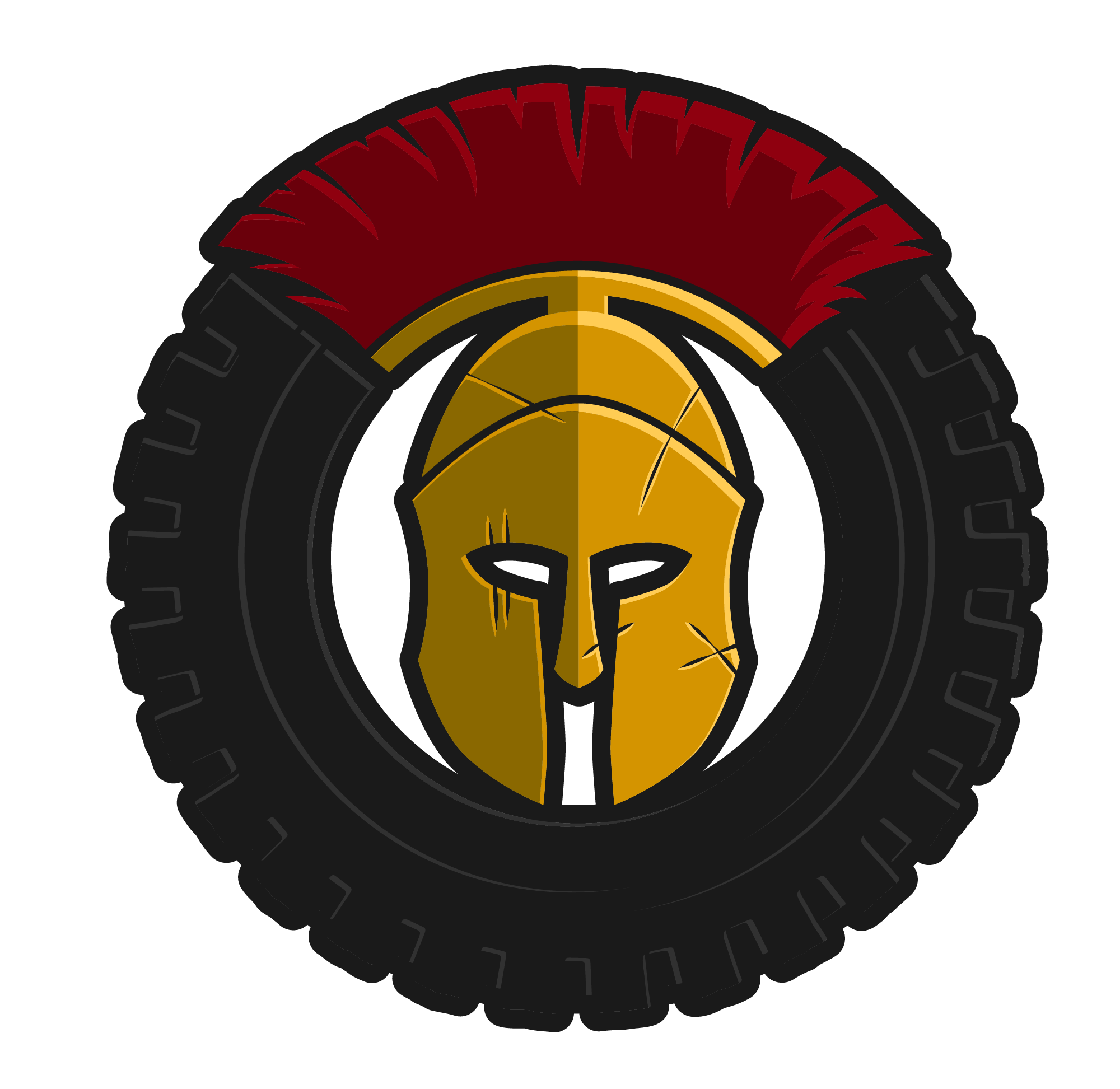
Cologne 🇩🇪
Content
Yesterday our path led us to Cologne-Weiden. Here once ran the ancient Roman road to Trier, the Via Belgica. Along this route stood numerous villas, estates and tombs, among them the Roman Tomb of Weiden. It is one of the best preserved and most impressive Roman burial monuments north of the Alps.

Cologne in Roman Times
Cologne is one of the oldest cities in Germany with Roman roots. Around AD 50, Emperor Claudius elevated the settlement on the Rhine to the status of a city, naming it Colonia Claudia Ara Agrippinensium after his wife Agrippina, who had been born there.
The Colonia became the capital of the province of Lower Germania and an important center of trade, administration and the military. Roads such as the Via Belgica connected Cologne with Trier, Boulogne-sur-Mer and thus with the entire Roman Empire.
Traces of this period can still be seen today: sections of the city wall and aqueducts, the Praetorium, and the Dionysus mosaic in the Roman-Germanic Museum (currently closed).
The Burial Chamber
The burial chamber was built in the 2nd century AD and was used over several generations. Finds of pottery, portrait busts and coins show that it remained in use until the 4th century. It was probably constructed for a wealthy family who lived in a nearby villa rustica.
A staircase leads about six meters down into the earth. There a rectangular chamber opens, built of tuff from the Brohl Valley and covered with a barrel vault. Along the walls are large niches with stone couches, reminiscent of a Roman triclinium (a dining room with three couches). At the center stands a monumental sarcophagus of Carrara marble, richly decorated and originally placed above ground before it was brought into the chamber.
Particularly impressive are two stone chairs, so finely crafted that they strikingly resemble real wicker seats. They probably served a symbolic role as seats of honor at the “eternal banquet” of the dead. The three portrait busts (two female and one male) placed in the niches likely represent family members and date to the 2nd century.
The burial chamber also contained numerous grave goods: glass vessels, jewelry, urns and portrait busts depicting the deceased. Part of these finds today belong to the collection of the Roman-Germanic Museum.
The Discovery
The chamber was discovered in 1843 during construction work. Its Roman superstructure had long since been dismantled and the chamber itself had collapsed. During this process, the sarcophagus, which was probably once placed above ground, had fallen into the underground chamber.
Just one year later, King Frederick William IV of Prussia ordered its permanent protection. The task of securing and roofing the site was entrusted to Cologne’s cathedral master builder Ernst Friedrich Zwirner, making the Roman Tomb one of the earliest examples of state-organized monument preservation along the Rhine. Since 2019 it has once again been regularly open to visitors.
Our visit
Although we live in the Cologne area, we had never managed to visit the Roman Tomb in Weiden before. This time the opportunity finally arose when we went to see our friend @robbicon90.
The supporting association has prepared the site very well. Above ground, in the former warden’s house, there is a small exhibition with information about Roman Cologne and the finds from the tomb. While waiting there for the next guided tour, visitors can get a good overview. Afterwards, the guide leads the group down into the burial chamber, sharing many interesting facts and small anecdotes that made the place feel even more alive.
The visit takes barely half an hour, but it is highly impressive. Here the Romans come to life in a direct and tangible way. It is a place we can recommend to everyone.

How to get there?
- Roman tomb at Google Maps,
Coordinates: 50°56’19.2″N 6°49’28.4″E
Website: Museum Website
You are currently viewing a placeholder content from Google Maps. To access the actual content, click the button below. Please note that doing so will share data with third-party providers.
More Information